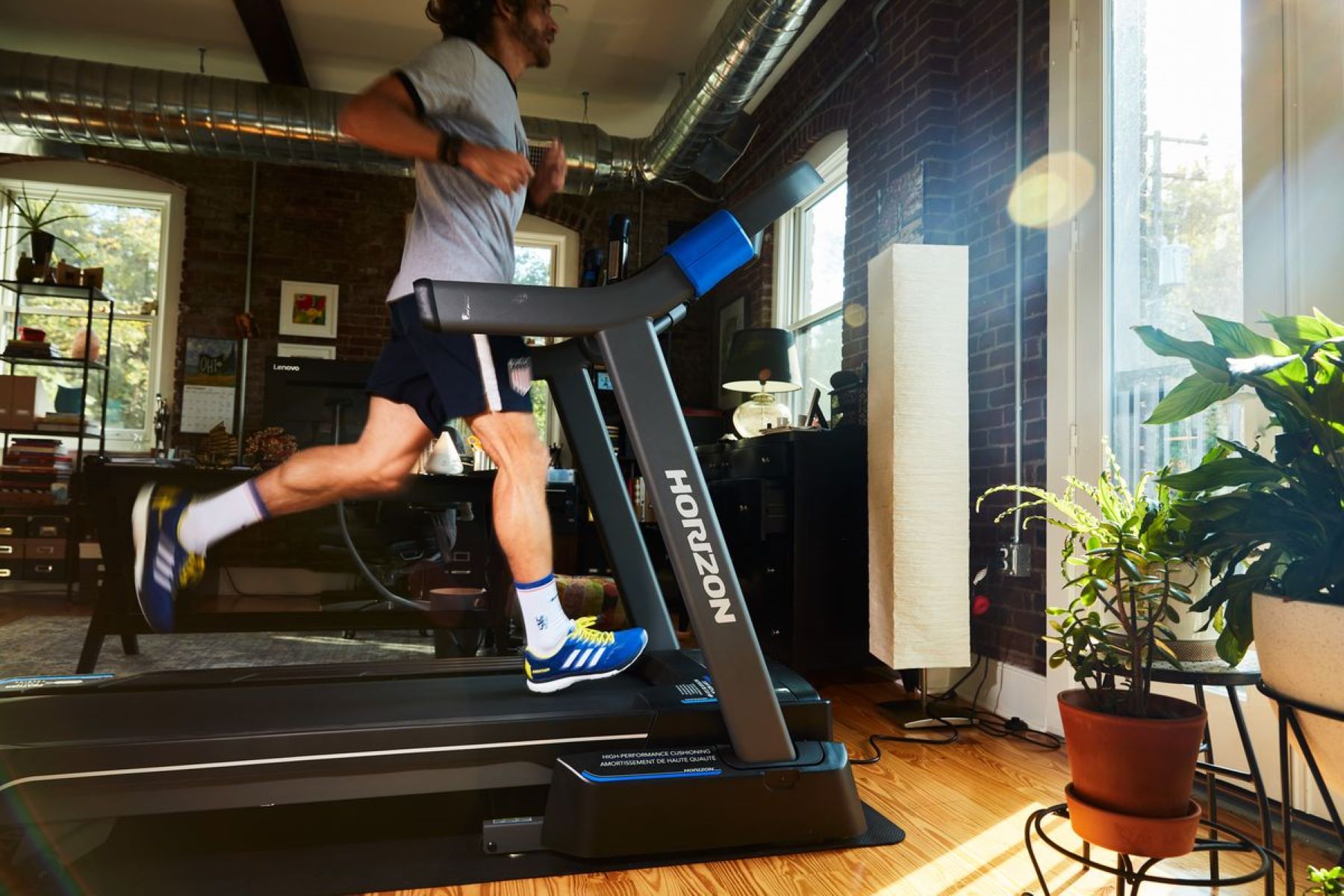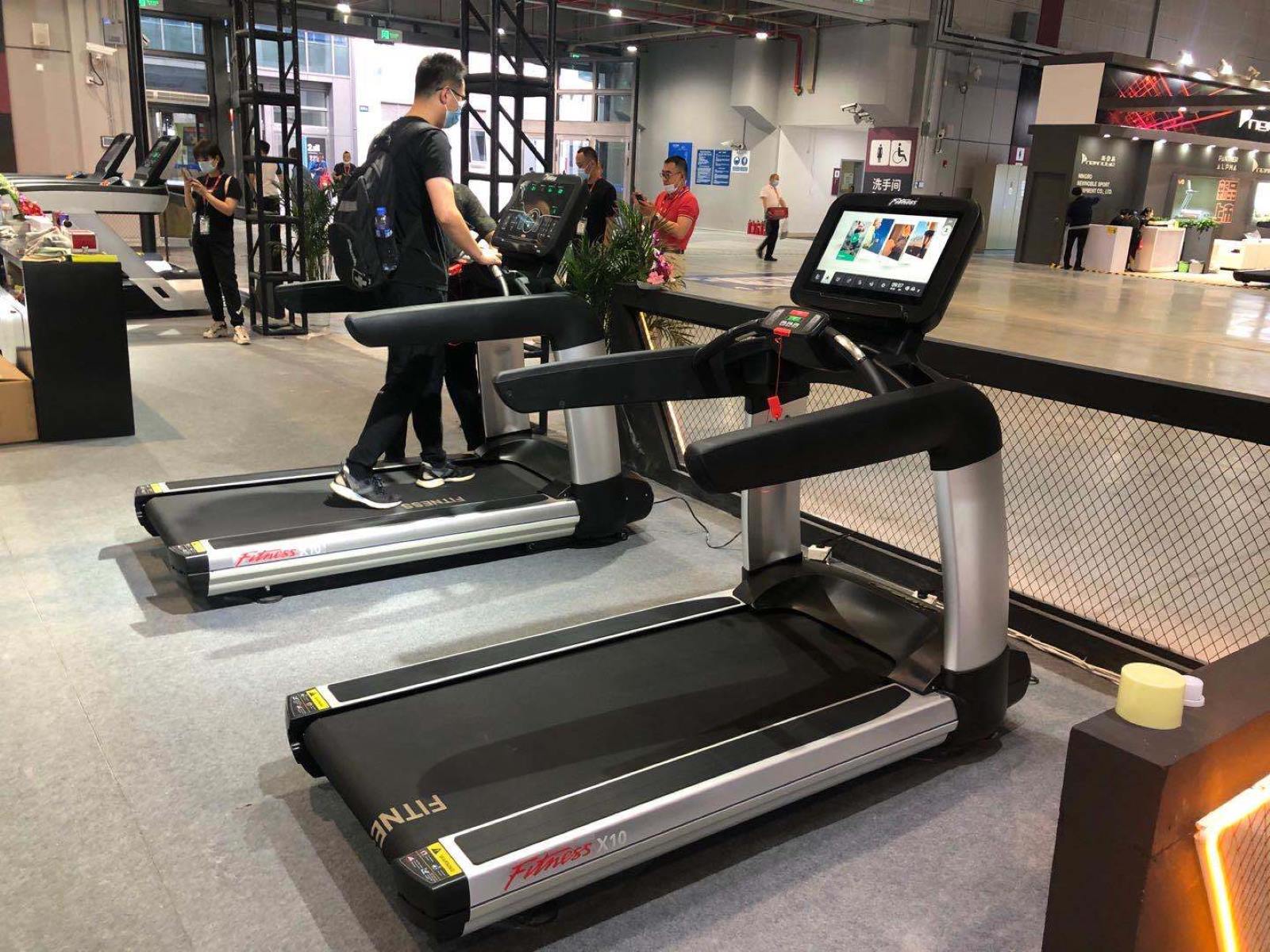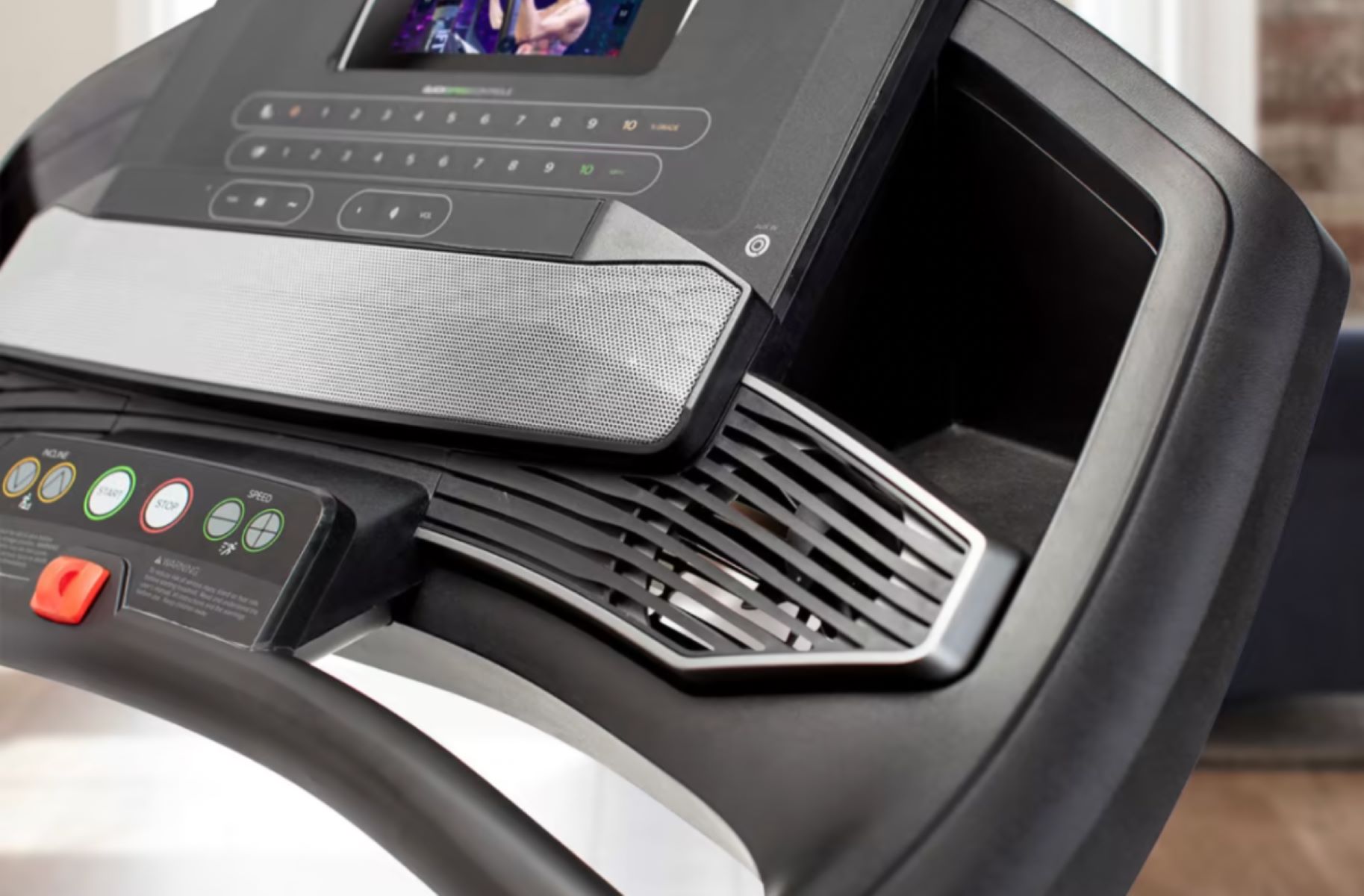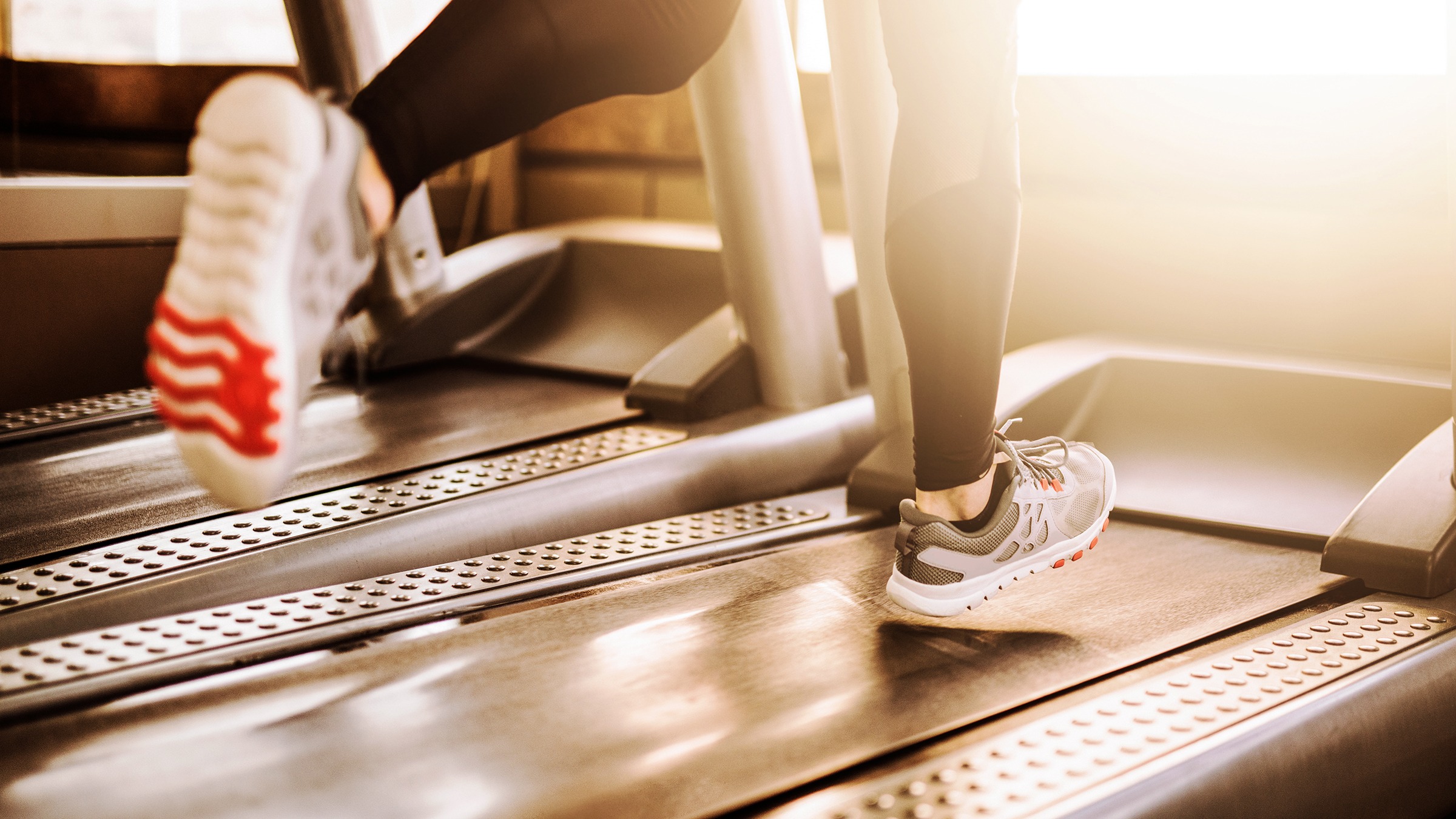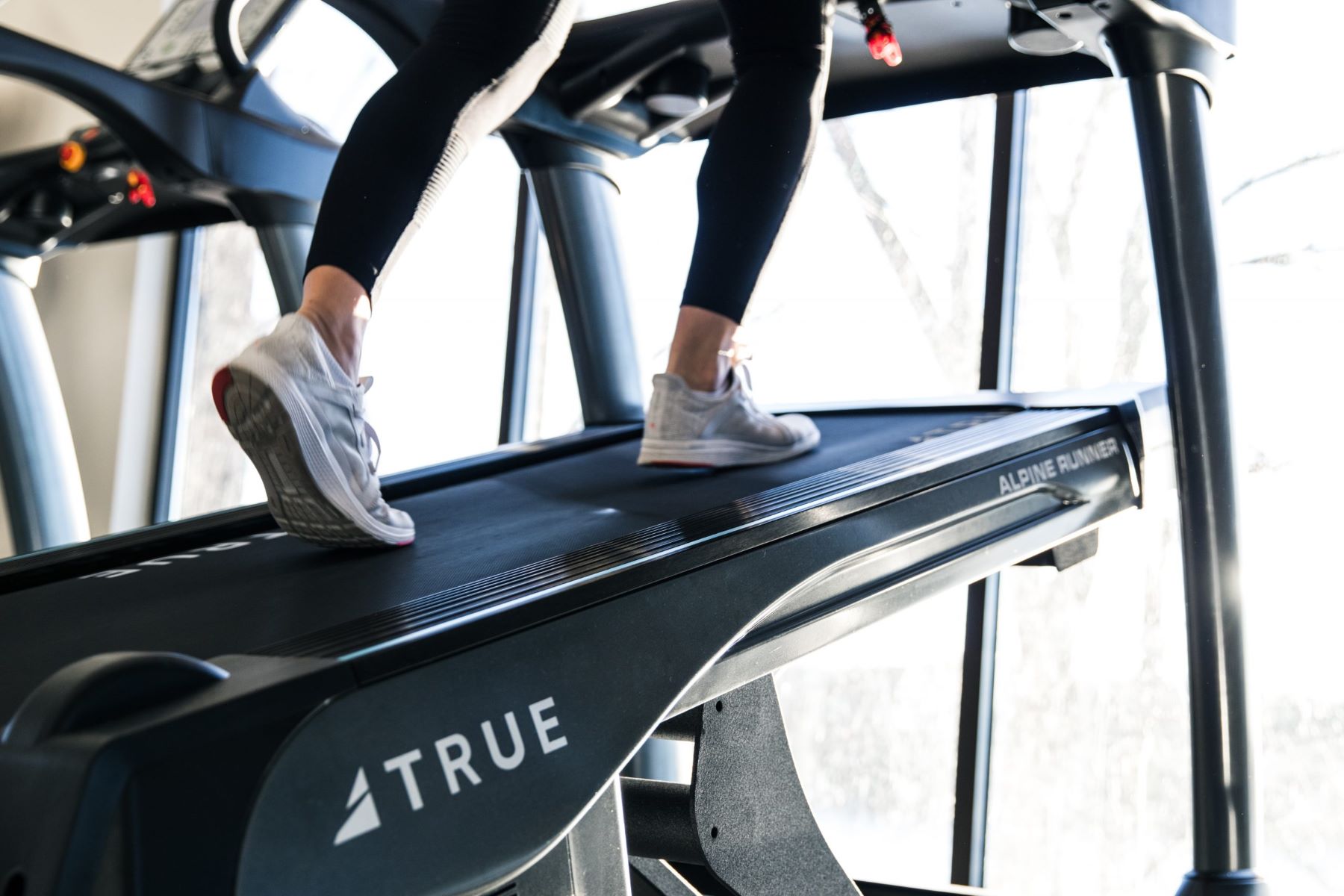

Featured
How To Incline Your Treadmill
Modified: January 2, 2024
Learn how to incline your treadmill with our featured guide. Maximize your workout and achieve better results with these helpful tips and techniques.
Introduction
Welcome to the world of treadmill incline workouts! If you’re looking to take your treadmill routine to the next level, incorporating incline training can be a game-changer. Inclining your treadmill adds an extra dimension to your workouts, challenging your muscles and helping you achieve your fitness goals faster.
Many people are unaware of the benefits that come with inclining their treadmill. By adjusting the incline, you simulate the experience of running or walking uphill, which engages different muscle groups and increases the intensity of your workout. Whether you’re a beginner or an experienced athlete, incorporating incline training into your routine can provide a range of advantages.
In this article, we will explore the benefits of inclining your treadmill, safety precautions to keep in mind, and provide you with a step-by-step guide to help you incline your treadmill effectively. We will also share some tips for making the most out of your incline workouts and highlight common mistakes to avoid.
So, if you’re ready to elevate your treadmill workouts and achieve new fitness heights, let’s dive into the world of treadmill incline training!
Benefits of Inclining Your Treadmill
Inclining your treadmill offers a wide range of benefits that can enhance your fitness journey. Here are some key advantages of incorporating incline training into your treadmill workouts:
- Burns more calories: Running or walking on an incline requires more effort from your muscles, increasing the intensity of your workout. This results in a higher calorie burn compared to exercising on a flat surface. In fact, research suggests that incline training can help you burn up to 50% more calories than walking or running on a flat treadmill.
- Strengthens lower body muscles: When you incline your treadmill, you activate and engage different muscle groups in your legs, including your glutes, hamstrings, and calf muscles. By regularly incorporating incline training into your workouts, you can build strength and improve the definition of your lower body.
- Improves cardiovascular endurance: Inclined treadmill workouts increase your heart rate, contributing to improved cardiovascular endurance. The combination of increased intensity and uphill movement challenges your cardiovascular system, helping to boost your stamina and endurance over time.
- Simulates outdoor running: If your goal is to prepare for outdoor running events or train for hilly terrains, incline training on your treadmill is a great way to simulate those conditions. It provides a close approximation of running or walking uphill, helping you build the necessary strength and endurance required for those types of terrains.
- Reduces impact on joints: Inclined treadmill workouts can be gentler on your joints compared to outdoor running on hard surfaces. The incline helps distribute the impact evenly across your muscles and joints, reducing the strain on specific areas such as your knees and ankles. This makes it a suitable option for individuals with joint concerns or those recovering from injuries.
- Breaks through workout plateaus: If you’ve hit a fitness plateau and are struggling to see progress, incorporating incline training into your treadmill workouts can help break through that stagnant phase. By challenging your muscles in a new way, incline training provides a fresh stimulus for improvement, helping you overcome plateaus and continue making progress towards your fitness goals.
With these incredible benefits, it’s clear that inclining your treadmill can take your workouts to a whole new level. Not only will you burn more calories and strengthen your muscles, but you’ll also improve your cardiovascular endurance and prepare yourself for outdoor running challenges. So, let’s delve into the next section and explore the safety precautions you should keep in mind when inclining your treadmill.
Safety Precautions for Inclining Your Treadmill
While incline training can be highly effective and beneficial, it’s important to prioritize safety to prevent any potential injuries. Here are some key safety precautions to keep in mind when inclining your treadmill:
- Start with a warm-up: Before increasing the incline on your treadmill, it’s crucial to warm up your muscles. Begin your session with a few minutes of walking or jogging at a lower incline to prepare your body for the more intense workout ahead.
- Gradually increase the incline: Avoid making sudden and large incline adjustments. Gradually increase the incline as your body adjusts to the challenge. This allows your muscles to adapt and reduces the risk of strain or injury.
- Maintain proper form: When inclining your treadmill, it’s essential to maintain proper form. Keep your posture upright, with your shoulders relaxed and your core engaged. Avoid leaning too far forward or backward, as this can put unnecessary strain on your back and joints.
- Listen to your body: Pay attention to how your body feels during your incline workouts. If you experience any pain or discomfort, gradually reduce the incline or discontinue the exercise altogether. It’s important to listen to your body’s signals and avoid pushing yourself beyond your limits.
- Stay hydrated: As with any workout, it’s essential to stay hydrated when inclining your treadmill. Keep a water bottle nearby and take regular sips to replenish fluids and prevent dehydration.
- Use the treadmill’s safety features: Familiarize yourself with the safety features of your treadmill, such as the emergency stop button or safety clip. Be aware of how to use these features in case of any emergencies.
- Consult a healthcare professional: If you have any pre-existing health conditions or concerns, it’s advisable to consult with a healthcare professional before incorporating incline training into your workouts. They can provide specific guidance and recommendations tailored to your needs.
By following these safety precautions, you can minimize the risk of injuries and ensure a safe and enjoyable incline training experience. Now that you’re aware of the safety aspects, let’s move on to the step-by-step guide on how to effectively incline your treadmill.
Step-by-Step Guide to Incline Your Treadmill
Inclining your treadmill is a simple process that can be done with just a few steps. Follow this step-by-step guide to effectively incline your treadmill:
- Familiarize yourself with your treadmill: Understand the controls and settings of your treadmill. Locate the incline buttons or options, typically located on the console or the handrails.
- Start your treadmill: Turn on the treadmill and set it to a comfortable speed for walking or jogging. This will allow you to adjust the incline as needed while the belt is in motion.
- Choose your incline level: Depending on your fitness level and goals, select the incline level that suits your needs. Start with a low incline setting, such as 1-2%, and gradually increase the incline as you become more comfortable and stronger.
- Adjust the incline settings: Use the incline buttons to adjust the incline level of your treadmill. Increase the incline in small increments, such as 0.5 or 1%, until you reach your desired incline level. Allow your body to adapt to each incline setting before making further adjustments.
- Focus on your form: As you increase the incline, maintain proper form and engage your core. Keep your body upright, with your shoulders relaxed and your gaze forward. Avoid holding onto the handrails excessively, as this can disrupt your natural running or walking motion.
- Monitor your intensity: Pay attention to how your body feels during the workout. Adjust your speed or incline level if needed to maintain a challenging but manageable intensity. Remember, it’s important to listen to your body’s signals and avoid overexertion.
- Cool down: After your incline workout, gradually decrease the incline level back to a flat position to allow your muscles to cool down. Slow your pace and continue walking or jogging at a comfortable intensity for a few minutes to gradually return your heart rate to a resting state.
Following this step-by-step guide will enable you to incline your treadmill effectively and safely. However, keep in mind that everyone’s fitness level and comfort with incline training may vary. It’s essential to adjust the incline according to your own abilities and gradually progress at a pace that suits you best.
Now that you know how to incline your treadmill, let’s explore some tips to make your incline workouts even more effective and rewarding.
Tips for Effective Incline Workouts
To maximize the benefits of your incline workouts and make them more effective, consider incorporating these tips into your routine:
- Vary the incline: Experiment with different incline levels during your workouts to challenge your muscles in different ways. Alternating between higher and lower inclines can keep your workouts engaging and prevent plateauing.
- Add intervals: Incorporate intervals of higher intensity by increasing the incline and speed for short bursts of time. This can help boost your calorie burn, improve your cardiovascular fitness, and simulate outdoor running conditions.
- Mix in strength exercises: Take advantage of the incline to incorporate exercises like walking lunges or side shuffles on the side rails to target additional muscle groups. Use the incline as an opportunity to combine cardiovascular and strength training in one workout.
- Focus on proper posture: Maintain good posture throughout your entire workout. Keep your shoulders relaxed and down, engage your core, and avoid slouching or leaning on the handrails. This helps maximize the engagement of your muscles and reduces the risk of strain or injury.
- Track your progress: Use the settings on your treadmill or a fitness tracking app to monitor your progress. Keep track of your incline levels, durations, and distances covered to see how you’re progressing over time. This can provide motivation and help you set new goals for your incline workouts.
- Stay hydrated: Remember to drink water before, during, and after your incline workouts to stay properly hydrated. Sweating and increased intensity can easily lead to dehydration, so keep a water bottle nearby to sip on throughout your session.
- Challenge yourself gradually: As you become more comfortable with incline training, gradually increase the incline and intensity of your workouts. Listen to your body and only progress when you feel ready to take on a higher challenge.
- Make it enjoyable: Spice up your incline workouts by listening to music, podcasts, or audiobooks that motivate you. Alternatively, you can watch TV shows or movies to make the time fly by. Creating an enjoyable environment can make your workouts more pleasant and help you stay consistent.
By applying these tips, you can make your incline workouts more effective, engaging, and enjoyable. Remember to always prioritize safety and listen to your body throughout the process. Now, let’s move on to the next section, where we’ll discuss common mistakes to avoid when inclining your treadmill.
Common Mistakes to Avoid when Inclining Your Treadmill
While incline training on your treadmill can be highly beneficial, it’s essential to be aware of common mistakes that can hinder your progress or increase the risk of injuries. Avoiding these mistakes will ensure that you make the most out of your incline workouts. Here are some common mistakes to be mindful of:
- Starting with a high incline: One of the most common mistakes is starting with a high incline level right from the beginning. This can put excessive strain on your muscles and joints, increasing the risk of injury. Instead, begin with a lower incline and gradually increase it as you build strength and endurance.
- Leaning on the handrails: Leaning on the handrails while inclining your treadmill can disrupt your natural gait and reduce the effectiveness of your workout. It also places additional strain on your shoulders and can lead to bad posture. Focus on engaging your core and maintaining a proper upright posture throughout your workout.
- Ignoring proper footwear: Wearing inappropriate footwear can be a major mistake when inclining your treadmill. Opt for supportive athletic shoes that provide stability and cushioning to minimize the risk of foot or ankle discomfort.
- Taking too long strides: When inclining your treadmill, avoid taking excessively long strides. This can strain your hips, knees, and ankles. Opt for shorter, controlled strides to maintain proper form and minimize the impact on your joints.
- Ignoring rest and recovery: Rest and recovery are crucial aspects of any workout routine. Failing to incorporate rest days can lead to overtraining and potential injuries. Allow your body time to recover and repair itself from the intensity of incline workouts.
- Relying solely on incline workouts: While incline training is beneficial, it’s important to have a well-rounded fitness routine. Include a variety of exercises, such as strength training, flexibility work, and cardiovascular activities, to ensure overall fitness and prevent muscle imbalances.
- Not adjusting the speed: Incline training is not just about increasing the incline; it’s also important to adjust the speed accordingly. Avoid running or walking too fast, especially when starting with a steep incline. Find a pace that allows you to maintain proper form and control throughout your workout.
- Ignoring discomfort or pain: Pushing through discomfort or pain during your incline workouts is a big mistake. Discomfort or pain could be a red flag indicating strain or injury. If something doesn’t feel right, listen to your body and make the necessary adjustments or seek medical advice if needed.
By being aware of these common mistakes and incorporating the proper techniques into your incline workouts, you can minimize the risk of injuries and ensure optimal results. Let’s wrap up this article by summarizing the key points we’ve covered so far.
Conclusion
Inclining your treadmill can take your workouts to new heights, both figuratively and literally. By incorporating incline training into your treadmill routine, you can experience a range of benefits, including increased calorie burn, improved cardiovascular endurance, and strengthened lower body muscles. It also simulates outdoor running conditions and helps break through workout plateaus.
However, it’s crucial to prioritize safety when inclining your treadmill. Remember to warm up, gradually increase the incline, and maintain proper form throughout your workouts. Listening to your body, staying hydrated, and using the treadmill’s safety features are important aspects of a safe and effective incline training session.
To make the most out of your incline workouts, consider implementing tips such as varying incline levels, incorporating intervals, and mixing in strength exercises. Monitoring your progress, staying hydrated, challenging yourself gradually, and making your workouts enjoyable can also enhance your overall experience.
Avoid common mistakes like starting with a steep incline, leaning on handrails, ignoring proper footwear, and taking too long strides. Remember to prioritize rest and recovery, incorporate a well-rounded fitness routine, adjust the speed accordingly, and listen to your body’s signals to avoid discomfort or injury.
Now that you have a comprehensive understanding of inclining your treadmill, it’s time to lace up your shoes, adjust that incline, and embark on an invigorating and rewarding workout journey. Push yourself, have fun, and enjoy the many benefits of incline training.
So, whether you’re a beginner or a seasoned fitness enthusiast, start inclining your treadmill today and reach new fitness heights!



